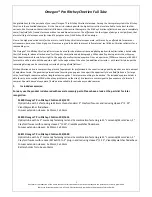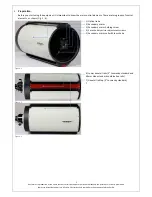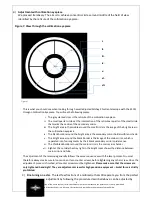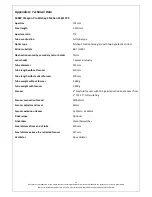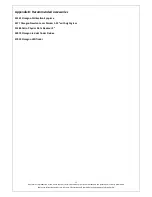
14
Any form of reproduction of the entire contents of this document or parts thereof beyond the private use is strictly prohibited.
Subject to alterations and errors. All texts, illustrations and symbols are the property of nimax GmbH.
Appendix C:
Practical hint: Cleaning the optical system
After some time at the latest any star gazer will notice that pollution has spread over the optical surfaces of his
telescope.
The following is generally valid: small dust particles and other minor contamination has no significant effect on the
performance of an optical system and may thus remain on optical surfaces!
Any cleaning is work and bears risks and should therefore and should therefore be carried out at rarely as possible! In
addition to the certainty that regular cleaning will leave scratches in the optical system, there is also the risk of the
optics dropping down, especially when wet cleaning!
The most frequent types of pollution on telescopes are dust and pollen, on eyepieces grease and residues from lacrimal
fluid. When using a strong lamp, pollution will practically always be visible, even on completely new optics.
When should a telescope be cleaned?
The optics should be cleaned if the picture negatively affected when looking through. With extremely polluted optics
bright objects, such as planets, show a light ring, similar to a light dew deposit. Only then optics needs to be cleaned –
not if dust or small dirt particles can be seen on the mirror.
There are only a few exceptions from this rule:
1)
Contamination by pollen. Pollen contains sugar and is degraded by bacteria, which settle on the optics. These
organisms exude acid containing substances, which could attack the optical system. If a yellowy deposit is
detected on the optics after a star gazing session in spring, the optical system should be cleaned.
2)
Large area contamination. If beverages or other fluids have accidently come into contact with the optical system,
the optics must be cleaned Even if these fluids were clear, components in these fluids or there degradation
products may attack the coating of optical components.
3)
Eyepiece lenses since the optical components in eyepieces are near focus, bigger dust particles will become
visible, e.g. dirt on eyelashes will disturb the image. Eyepieces must therefore be cleaned more frequently.
Cleaning should be performed as follows:
1)
Brush off coarse dirt particles with a soft brush
2)
If possible spray-clean the optics with distilled water, e.g. with plant sprayer. Make sure that no water enters into
the optical system, use e.g. a kitchen towel to wipe it off the outer border of the optics. Eyepieces are cleaned
with the eye lens pointing down, so that the cleaning fluid cannot enter into the space between the lenses.
3)
Do not wipe off the few drops that will still be on the optics after cleaning, suck them off with a soft cloth.
4)
Only wipe if it is absolutely necessary – do not apply pressure! Always make sure that the cloth is clean and
suitable for this purpose, e.g. the 21290 Omegon® cleaning cloth or the 47315 Omegon® SPUDZ micro-fibre
cleaning cloth.
5)
Only use cleaning fluid if distilled water is not able to remove the dirt. Ideal for this purpose are special fluids, e.g.
the fluid contained in the 5551 Omegon® 5 in 1 cleaning set. If you want to mix your own cleaning fluid you must
always make sure, to solely use clean components from a chemist shop. As an example, a solution with isopropyl
alcohol and/or Ethanol is suitable for cleaning the optics, but the use of spirit instead of the higher quality Ethanol
will sustainably ruin the coating of the optics. Re-coating such a single item will normally cost you a four digit sum
of money – one should therefore always try to avoid such damage. The use of fragrances as frequently used in
commercial glass cleaners is strictly prohibited. These any many other substances will leave a film on the surface,
which is not or hardly visible when just examining the object. However, when looking through the optics, the
image will be heavily affected. The same applies for the use of the more reasonably priced demineralized water
from a DIY-shop instead of the real distilled water from a chemist. One should in any case try and test the fluids
and methods on an e.g. glass table to find out if any residues will remain after drying.


